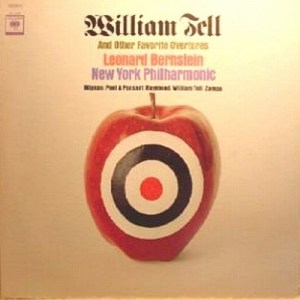 Reviews and Commentaries for the Music of Berlioz
Reviews and Commentaries for the Music of Berlioz
More Vintage Hot Stamper Pressings on Columbia
And this one comes complete with the bonus 7″ entitled “Berlioz Takes a Trip,” in which Bernstein explores the work “with musical illustrations by the New York Philharmonic.”
This work is difficult to fit onto a single LP, clocking in at around 45 minutes, which means that the mastering engineer has three options when cutting the record:
- Compress the dynamics,
- Lower the level, or
- Filter the deep bass.
On this side two it seems that none of those approaches were taken by the engineer who cut this record in the early ’80s — there’s plenty of bass, as well as powerful dynamics, and the levels seem fine.
How he do it? Beats me. Glad he did though.
What’s Your Theory Then?
Side one is bass shy, however. Did the engineer filter out the lower frequencies, or is it just a case of pressing variation being the culprit. Who can say?
If we had many more copies with these same stampers for side one, all with less bass, we might be able to draw a conclusion about that, one that might be highly probable but of course not provable.
The very next copy we might find with those stampers could have plenty of bass.
Then we would be forced to say that our highly probable theory had been falsified conclusively.
So much for theories.
Which is one of the main reasons we avoid them. We play the records to find out how they sound. We don’t feel the inclination to theorize about them much.
We are more inclined to the No Theory approach to finding good records, which you can read about here.
We think the audiophile community would be better served by more critical listening and less theorizing, speculating and opining.
Skeptical thinking has been key to our success from the very start, and it can be key to your success too. To understand records, you need to think about them critically in order to get very far in this devilishly difficult hobby we have chosen for ourselves.
(more…)

 Reviews and Commentaries for the Music of Berlioz
Reviews and Commentaries for the Music of Berlioz
 More music written or performed by Leonard Bernstein (1918-1990)
More music written or performed by Leonard Bernstein (1918-1990)
 More of the music of Dmitri Shostakovich (1906-1975)
More of the music of Dmitri Shostakovich (1906-1975)


 More of the Music of George Gershwin
More of the Music of George Gershwin